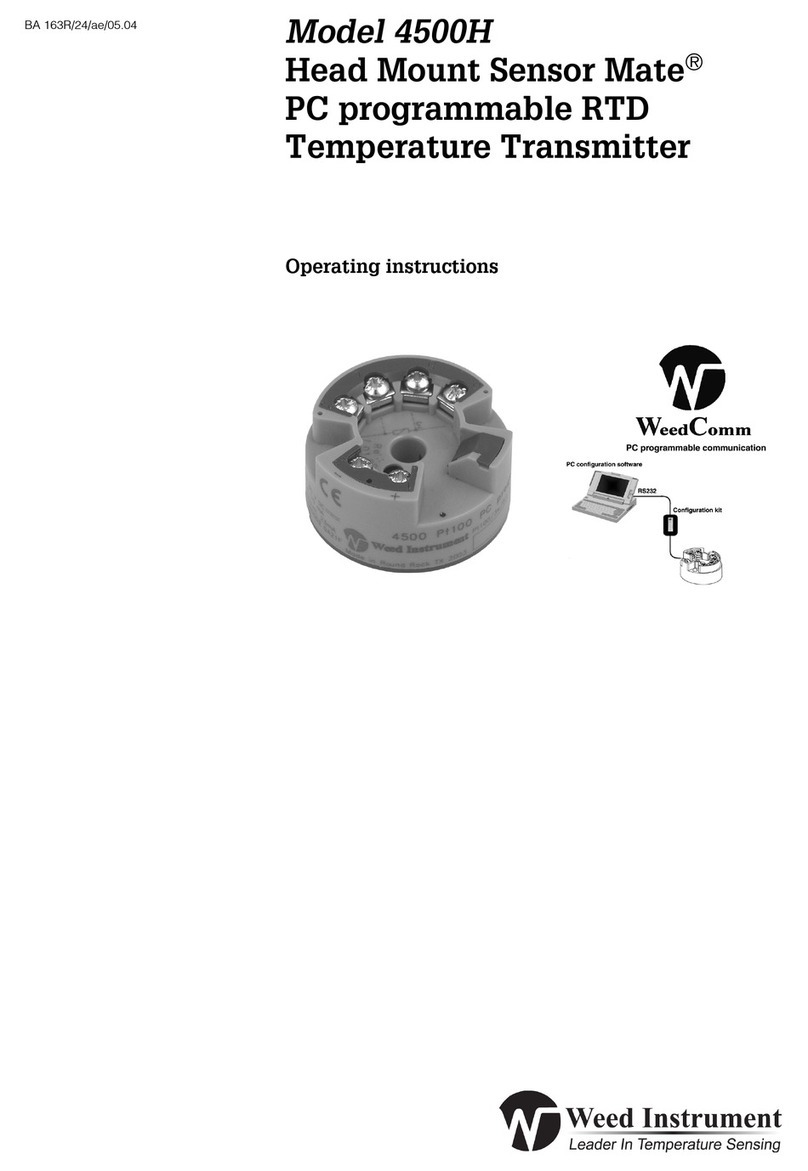
Safety notes Model 7600D
4Weed
1 Safety notes
Safe and secure operation of the DIN rail transmitter can only be guaranteed if the
operating instructions and all safety notes are read, understood and followed.
1.1 Designated use
•The unit is a presettable temperature DIN rail transmitter for resistance temperature
detectors (RTD), thermocouple (TC) as well as resistance and voltage sensors. The
unit is constructed for mounting on a DIN rail.
•The manufacturer cannot be held responsible for damage caused by misuse of the
unit.
•Separate Ex documentation is part of this operating manual, for measurement sys-
tems in hazardous areas. The installation conditions and connection values indicated
in these instructions must be followed!
1.2 Installation, commissioning and operation
The unit is constructed using the most up-to-date production equipment and complies
to the safety requirements of the local guidelines. The temperature transmitter is fully
factory tested according to the specifications indicated on the order. However, if it is
installed incorrectly or is misused, certain application dangers can occur. Installation
and wiring of the unit must only be done by trained, skilled personnel who are
authorized to do so by the plant operator. This skilled staff must have read and
understood these instructions and must follow them to the letter. The plant operator
must make sure that the measurement system has been correctly wired to the
connection schematics.
Electrical temperature sensors such as RTD's and thermocouples produce low-level
signals proportional to their sensed temperature. The temperature transmitter converts
the low-level sensor signal to a standard 4 to 20 mA DC signal that is relatively
insensitive to lead length and electrical noise. This current signal is then transmitted to
the control room via two wires.
The transmitter needs to be commissioned before installation in a hazardous area.
Configuration of the device in explosion area is not allowed. Make sure the instruments
in the loop are installed in accordance with intrinsically safe or non-incendive field wiring
practices before connecting in an explosive atmosphere.
The transmitter electronics module is permanently sealed within the housing, resisting
moisture and corrosive damage. Verify that the operating atmosphere of the transmitter
is consistent with the appropriate hazardous locations certifications.
#Warning!
Electrical shock could cause death or serious injury. If the sensor is installed in a high
voltage environment and a fault or installation error occurs, high voltage may be present
on the transmitter leads and terminals.




























